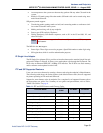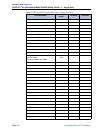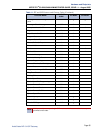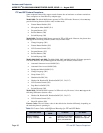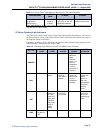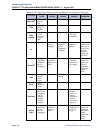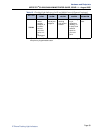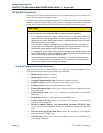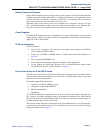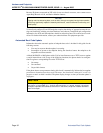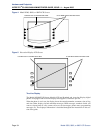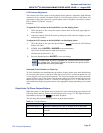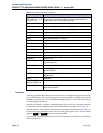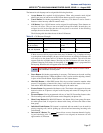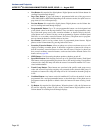
Hardware and Endpoints
INTER-TEL
®
CS-5200/5400 ADMINISTRATOR GUIDE, ISSUE 1.1 – August 2005
Battery Packs and Chargers
Page 91
Battery Packs and Chargers
Models 8664 and 8665 require a charged battery pack to operate. The Nickel Metal Hydride
(NiMH) rechargeable battery pack needs to be charged periodically. A charged battery pack
provides four hours of talk time or 80 hours of idle time. To save battery power, instruct the
user to place the phone in idle mode at the end of every call.
When the charge on the battery pack is low, the battery icon is displayed. The user will also
hear a soft beep through the earpiece every six seconds when the battery is low. When the bat-
tery pack is critically low, the phone will not work until the battery pack is charged
Power Supplies
Each SIP and IP endpoint must use a compatible power supply. Because there are many power
supply options, contact your authorized Inter-Tel equipment provider when selecting a power
supply for an IP or SIP endpoint.
IP Phone Limitations
SIP and IP phones:
• Do not have a secondary voice path and consequently cannot support the Off-Hook
Voice Announce (OHVA) feature.
• Cannot use a PCDPM or MDPM. Refer to “Digital Phone Data Port Modules” on
page 106.
• Do not support full DSS/BLF units.
• Do not support Desktop Open Architecture Interface (OAI) applications.
• Do not support the Agent Help, Record-A-Call, and Station Monitor features while
using P2P audio. Refer to “System Features” on page 111.
Peer-to-Peer Audio for IP and SIP Phones
The P2P audio feature allows certain IP and SIP phones to transmit and receive audio directly
with each other rather than through the system chassis. The P2P feature reduces delay and
packet loss for IP and SIP endpoints.
Phones that support P2P audio include:
• AudioCodes™ MP-104 MGCP gateway
• ITP phones, except the IP SoftPhone
• Multi-Protocol phones
• SIP phones
To use P2P, the IP Resource Application and the IP and/or SIP phones must be upgraded with
v8.1 firmware. In addition, the phones must be programmed as members of the same Network
Group. Calls between IP and SIP phones that are members of separate Network Groups are
routed through the chassis and do not use P2P.
The Network Group Diagnostics feature allows a System Administrator to verify that the Net-
work Groups are programmed correctly. For instructions on how to use the Network Group
Diagnostics feature, refer to page 55.



